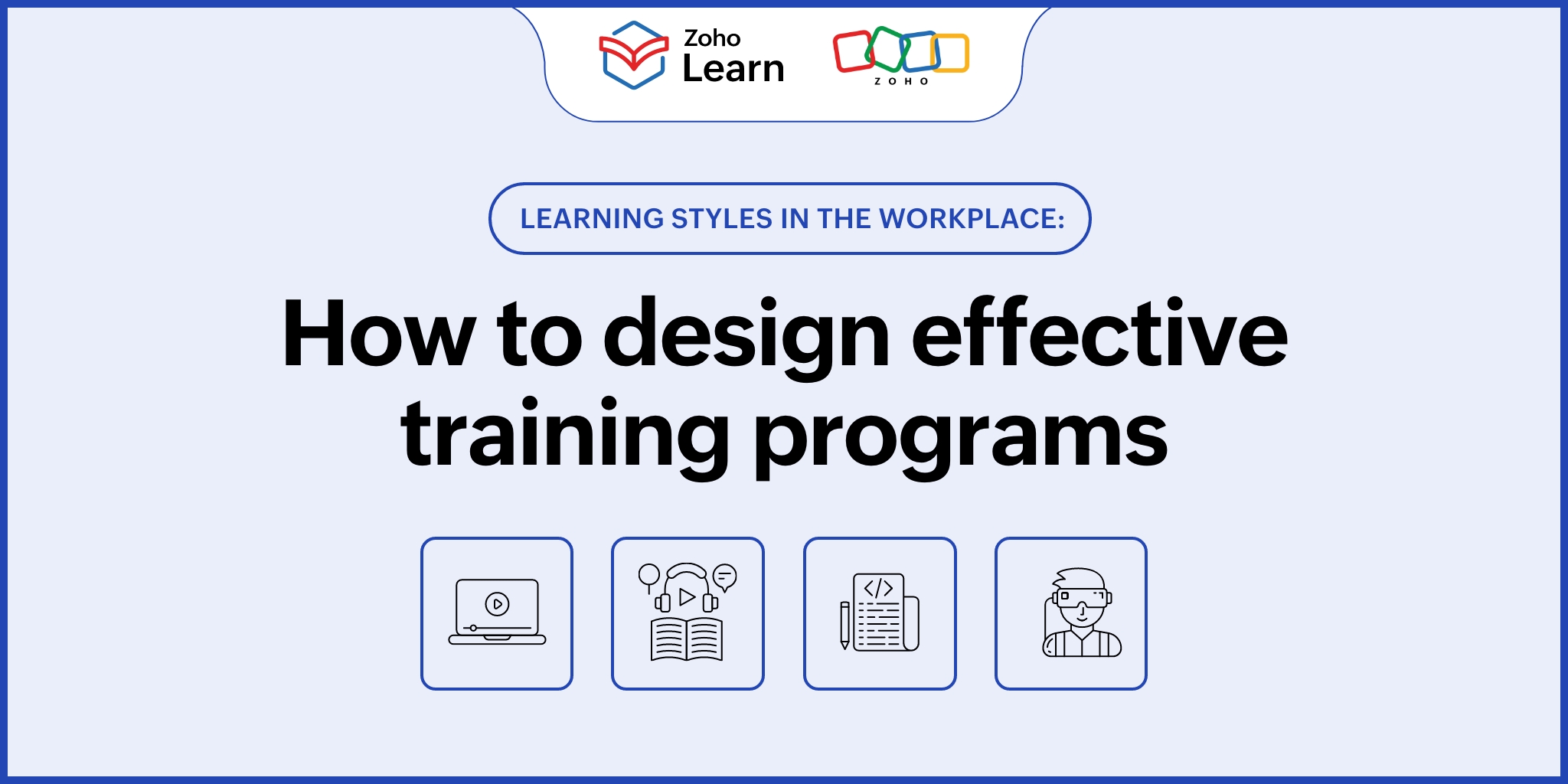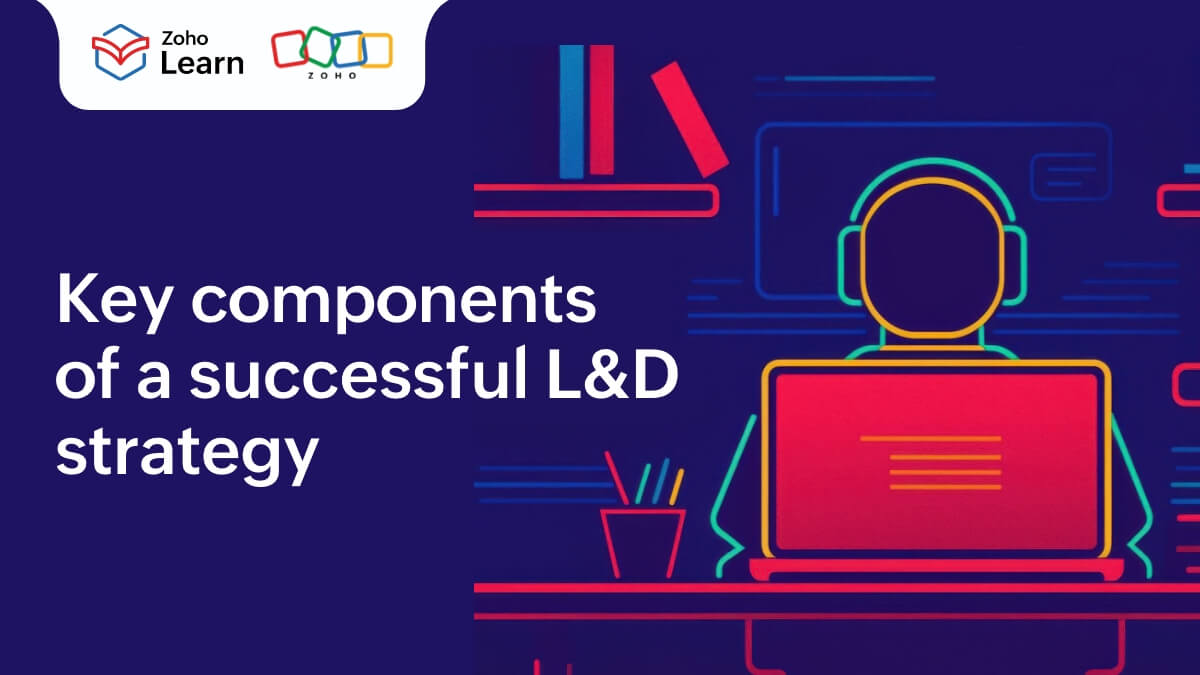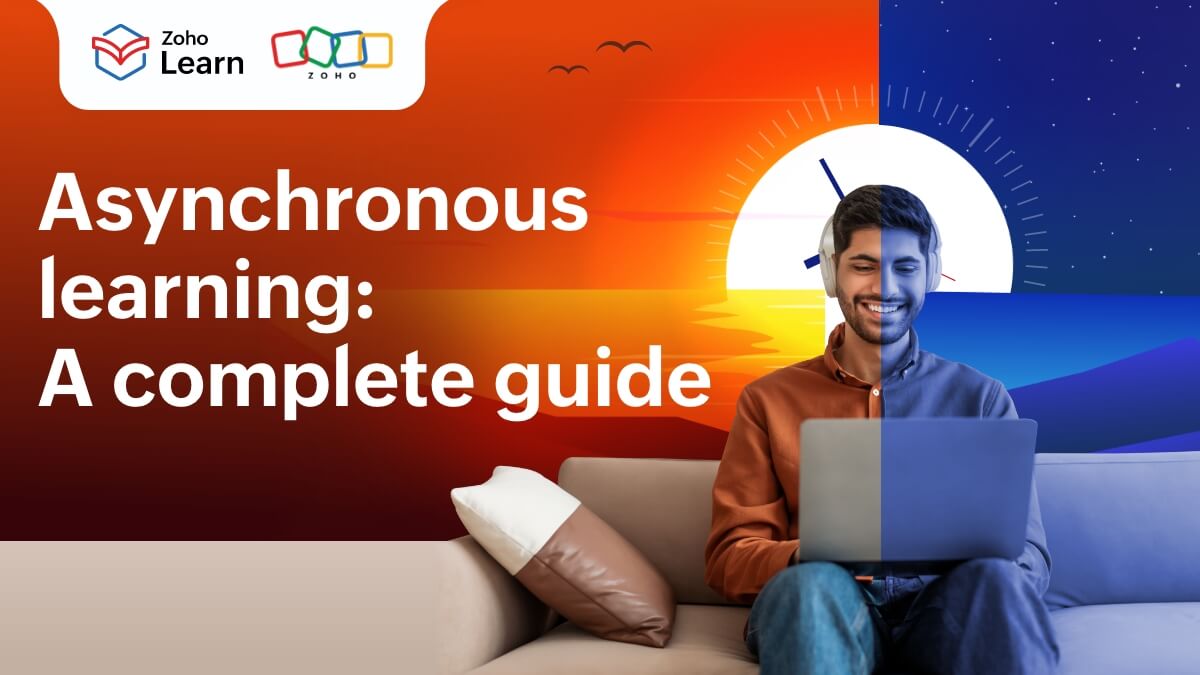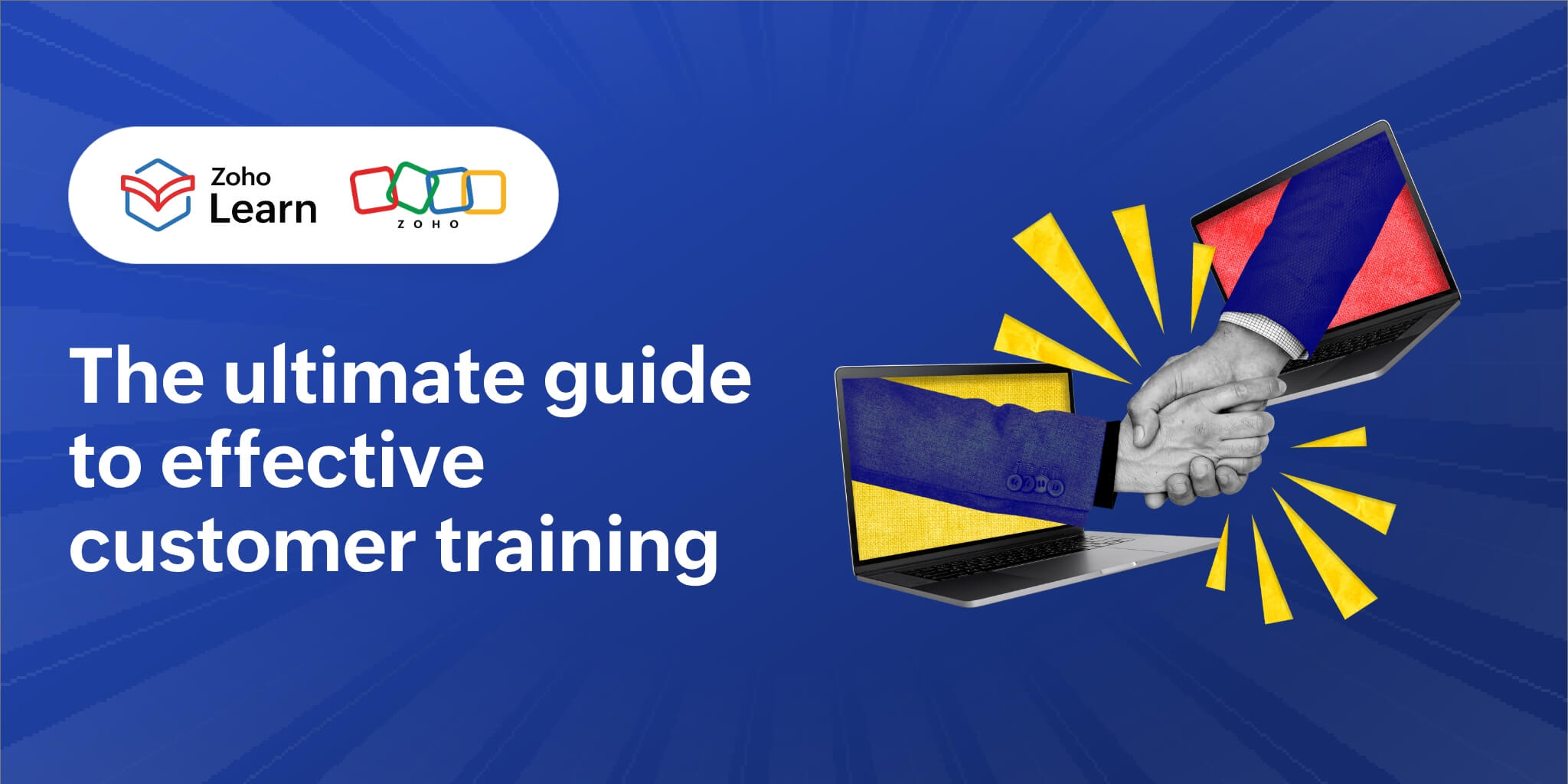Learning styles in the workplace: How to design effective training programs
- Last Updated : November 4, 2024
- 255 Views
- 4 Min Read

Every organization provides training in some capacity. But are these training programs well-received? Do employees understand the information easily? Is the learning experience accessible for everyone?
Analyzing learning styles answers these questions.
Learning isn't a one-size-fits-all approach. Every individual has one or more preferred ways of receiving and retaining information. Considering the learning styles of your employees is key to ensure that your training programs are effective. In this article, we'll identify the different learning styles, the ways to incorporate them, and the benefits of engaging different kinds of learners.
What are the different learning styles?
There are several learning models and theories that explain the different learning styles, one of the most common one being the VARK model. Developed by Neil Fleming, the VARK model classifies learners into four main categories: Visual, Auditory, Read/Write and Kinesthetic. It's important to understand the different learning styles before devising a training program that suits all kinds of learners.
Visual learners: Visual learners prefer to receive and learn information through visual stimuli. Videos, charts, graphs, and diagrams are some common ways that help visual learners absorb information easily.
Auditory learners: The most effective way to learn for auditory listeners is by listening. Audio inputs, group discussions, and even simply repeating information out loud can help auditory learners thrive in any training setting.
Read/Write learners: Text-based content is right up the alley for reading and writing learners. As the most traditional approach out of the four, books, articles, research papers, and any other printed or written word resonate well with reading/writing learners.
Kinesthetic learners: Kinesthetic learners process information best through hands-on experiences and physical engagement. Incorporating movement and practical application of concepts is a great way to grasp information for kinesthetic learners.
Most people have a dominant learning style, but it's equally possible for some to have two or more learning styles that are equally dominant, while others have no specific preference for any learning style. This makes it the need of the hour to provide learning material in multiple formats.
How to design training programs that cater to different learning styles
Designing training programs that are suitable for all kinds of learners might seem like a daunting task, but some simple changes in your course design can make the learning experience more meaningful for the learners. Read on to find out how to be inclusive of the needs of all kinds of learners.
Create visual content
Video content is key to keeping visual learners engaged and interested in the learning material, but talking head videos with just the speaker explaining the content wouldn't really work. Make sure to include a lot of pictorial information for visual learners. Present data in the form of infographics to avoid important text-heavy information. Include charts, graphs, and diagrams to make the content easier to understand.
Play around with audio cues
Speech and sound play a huge role for auditory learners. Providing read-aloud features for text lessons and giving relevant podcasts and audio recordings as resources are very useful. Talking head videos within the learning material, audio recordings as assignments, and forums to chat with other learners go a long way for auditory learners.
Incorporate text readings
Reading/Writing learners use the traditional methods of learning extensively, so it's important not to do away with them completely. Written or printed word is their strong suit. Provide important information in bulleted lists or checkboxes so that it's adaptable to all kinds of learners. Make sure to include transcripts and subtitles for video lessons. Provide articles or books as additional learning material and accept written submissions for evaluations.
Add gamified content
Kinesthetic learners thrive on "learning by doing." Create adventure or simulation environments to introduce a topic, and design interactive quizzes with drag-and-drop features for kinesthetic learners to enjoy learning. Provide opportunities to submit demonstrative or recorded role-plays for assignments. Use gamification techniques wherever possible and ensure that kinesthetic learners are engaged in the training process.
What are the possible outcomes of engaging different types of learners?
Leads to better understanding
Presenting content in multiple formats within the same course leads to better understanding and retention of information. Catering to all kinds of learners helps them make connections between the visual, verbal, and real world. This enhances memory and comprehension and leads to a more effective learning experience for all.
Enhances employee engagement
Incorporate multimedia content and interactive elements to increase the learners' focus and attention. They not only stimulate learners but also cater to different learning styles. Learners are more likely to be motivated when they're actively participating in a way that suits their preferred learning style. Create training programs that include all kinds of learners and boost employee engagement.
Optimizes teamwork
When employees work in groups, individual learners' preferences play a key role. Collaboration can be more effective when there's a general and individual awareness about learning styles. Group members can optimize and achieve team success by maximizing each other's preferences and strengths.
Encourages creativity
Different kinds of simulations and engaging elements in courses encourage learners to explore and experiment. This provides an opportunity to discover new things and develop new solutions creatively. This, in turn, fosters a culture of creativity, versatility, and critical thinking skills.
Wrapping up
Accommodating different learning styles has moved from a fun luxury to a business necessity. Adopting a learning management system is one of the easiest ways to do so.
Create inclusive courses by incorporating strategies to accommodate all kinds of learners, find effective results from training programs, and lead your organization towards exponential growth.
 Kirthana V
Kirthana VA true believer of "The pen is mightier than the sword", Kirthana is a literature lover turned content writer.
With a background in Economics and English, she hopes to bring her analytical and creative side together to deliver authentic pieces of work.









